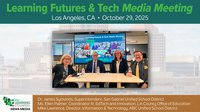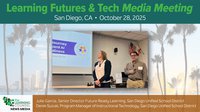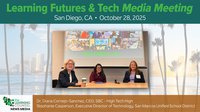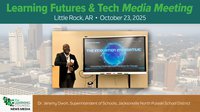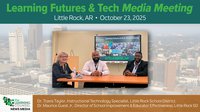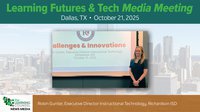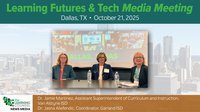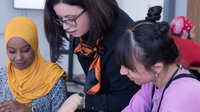Personalization is a major technological trend. Collect big data; throw it into IBM’s Watson or some other such machine learning blender and out comes just what you are looking for. In consumer marketing for example, using personalization technology – “targeted marketing” in their argot – results in the following:
- “Businesses that personalize web experiences see an average 19% increase in sales.” And personalization is not just good for the goose, but it’s good for the gander:
- “We crave customized experiences.” Here, “we” means you, me, and folks in general.
And, inasmuch as we get our news online, where companies can more easily track our movements, personalized journalism, too, is on the rise.
- “Our goal is to build the perfect personalized newspaper for every person in the world,” Commented Mark Zuckerberg about his goal for Facebook’s news feed. And on Slack, the latest communications’ technology star that merges texting/emailing/searching: “You can now get personalized Breaking News alerts on Slack.”
Again, the mechanism for producing personalization is collecting big data turning and letting loose the algorithms of machine learning.
Personalized Learning in Education
Personalization has become a watchword within K-12 too. Just as in marketing and journalism, the core idea is to use big data and machine learning to deliver just the right piece of information, at just the right time, to each student. Dreambox, a very visible company that provides personalized learning technology for instruction in mathematics, has a number of case studies on their website that demonstrate the effectiveness of personalized learning.
(Caveat: there are as many definitions of “personalized learning,” e.g., here is a representative definition from another well-known education publication: “… each student follows a customized path that responds and adapts based on his/her individual learning progress, motivations, and goals.” In fact, one educational pundit has called for a moratorium on putting out definitions of “personalized learning.” For this article, however, we want to be very, very clear: “personalized learning” means a student, sitting at a computer, receives just the right bit of instruction at just the right time because behind that instruction delivery there is a machine learning engine that is using big data to determine which specific bit of instruction should be delivered.)
While the folks in marketing seem head-over-heels in love with personalization technologies, those in journalism do have concerns: is all this “personalization turning us into solipsistic twits? ” Then there is what Negroponte warned, in his now classic book “Being Digital,” about the Web turning into everybody's narcissistic "Daily Me" feed.
Case in point: recall the recent flap about Facebook’s News Feed big data/machine learning algorithms potentially not including a diverse range of viewpoints in an individual’s News Feed.
And in education, there are real concerns too with the use of personalization technology:
- Isn’t personalized learning just a high-tech version of drill-and-practice? What process and content can be taught where the computer delivers just the right bit at just the right time? Sure, one can teach, via direct instruction plus practice, the long-division algorithm or who is buried in Grant’s Tomb, or even how to do distance/rate problems. But isn’t the real challenge figuring out that the problem is a distance/rate problem in the first place? It’s not clear that the understanding that results from a drill-and-practice, personalized learning episode is understanding that can be used outside the narrow context of the personalized learning experience.
- What is it, then, that a student learns when just the right piece of information is delivered to the student? The student is not expending any energy or effort to “figure things out.” The personalized learning technology seems to be spoon-feeding the student, minimizing the effort needed to learn. Are we doing a student a service by teaching the student that learning is simply sitting in front of a computer and being led by the nose, step-by-step, through a process? Or as Seymour Papert observed:
“… every time you teach something, you deprive a [student] of the pleasure and benefit of discovery.”
- Is a focus on the personal aspect of learning, in fact, the right focus in these times of collaboration and group work? Ok, the Carpe Diem schools in Arizona may be over-doing it by putting children in cubicles – cubicles!! – for half to three-quarters of the school day, but shouldn’t we be teaching students how to work together, how to learn together?
Perhaps the warning about personalization in journalism applies to personalization in education: Is all this “personalization turning [our children] into solipsistic twits? ”
Now to switch gears; instead of talking about personalized learning (PL), we will talk about social learning (SL) – technology that supports students learning from and with each other.
- While personalized learning has a student sitting at a computer, oftentimes with headphones on, social learning has learners talking with each other while using the computers to search for information, create artifacts, listen to music, view art, etc.
- In a social learning classroom, dialogue is the dominant mode of communication; learning is in the conversation. In a social learning classroom, a teacher, doesn’t, as a rule, lecture – doesn’t deliver a monologue – but uses the Socratic Method, engaging the students through questions and responses to co-operate in pursuing understanding.
- While personalized learning might convey the facts, it is in the conversation with others that deep learning takes place.
- In a social learning classroom, collaboration is the dominant mode of work. And, as Papert and Harel observed: “…[learning] happens especially felicitously in a context where the learner is consciously engaged in constructing a public entity…” Why? Because in using a computer, ideas are made visible – publicly visible. Then, through conversation, ideas can be changed, ideas can be built upon.
- In a social learning classroom, the process is one where learners converse and work hard to understand each other, with developing a common, shared understanding being the goal of that collaborative process.
In a social learning classroom, there is no danger of turning our children into solipsistic twits!
If one buys the definition of personalized learning noted above then PL is very much in contrast, nay opposition, to SL. How does one learner have a conversation with other learners, who are sitting next to each other, when all learners have headphones on? How does one learner have a conversation with other learners, who are sitting next to each other, when different instruction is being delivered to each learner? Indeed, the machine learning engine underlying PL wouldn’t want one learner to say to the other: “Hey, read what’s on my screen.” No, PL wants each learner to stay focused to his/her own computer and his/her own, personalized, learning path.
The above concerns notwithstanding, there is a big push today for personalized learning. Funding is going to adaptive learning companies; schools are trying personalized learning. And, personalized learning can reduce costs since fewer teachers are needed.
In this commentary, we clearly acknowledge that we have painted a PL versus SL picture. And, just as clearly there is a place for PL in the classroom; after all, practice, practice, practice is a time-honored instructional technique. The reason, however, for our PL vs SL picture is this: we feel that personalized learning is garnering an overwhelming – and disproportionate – amount of attention. When was the last time you saw an article about social learning? Education has a tendency to look for the quick fix – and that quick fix, today, is personalized learning. But, when was the last time the quick fix actually was the quick fix?




